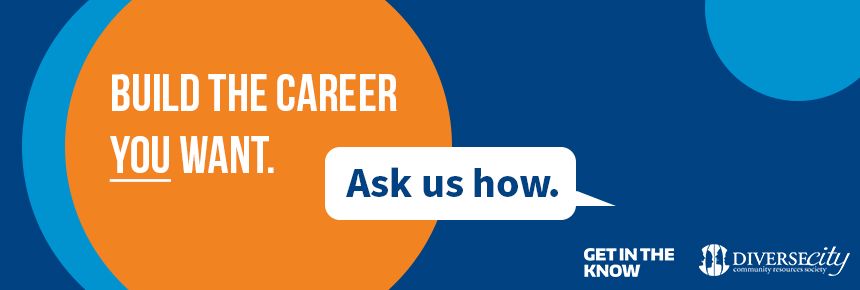By Shivani Arora and Don Duthie, Employment Specialists, DIVERSEcity Employment Programs
One of the first steps in getting a job in Canada is knowing how to write a resumé in the Canadian style. The curriculum vitae style you used in your home country may be different than what is expected in the Canadian job market. Let’s go through the essential components of a resumé and identify the type of resumé that works best for your career in Canada.
What goes in a resumé?
The main purpose of your resumé is to provide employers a brief snapshot of your experience, skills, abilities and accomplishments. It’s your chance to convince an employer that you are the right fit for a job.
A typical resumé includes the following six items:
1. Contact Information: Include your full name, address, professional email address and phone number. Make sure your voicemail is active with a professional greeting.
2. Professional Profile: In a few sentences, provide an overview of your professional experience and abilities that you bring to the position. Customize this to the specific job you’re applying to.
3. Key Skills: List several strengths and skills (both hard and soft skills) that are relevant and useful for the position.
4. Work Experience: For each position, list your job title, the company, dates of employment, and provide a description of your achievements and responsibilities.
5. Education and Certifications: Include the area of study/certification, name and location of school.
6. Volunteer and Community Involvement: Include relevant experiences that have a connection to your skillset or the job you’re applying for.
Things to avoid in a resumé
There are also a few things to leave off your resumé if you want to attract Canadian employers. They include:
• Photos
• Private information such as your age, gender, marital status or identification
• Information that’s not relevant to the position you’re applying for
• References
How should I format my resumé?
In Canada, the basic resumé types we use are chronological, functional or a combination/ hybrid style.
1. Chronological resumé
This type of resumé lists your work experience in reverse chronological order, from your most recent to the least recent position.
Suitable for: jobseekers with a stable and consistent employment history in the same industry as your job objective.
2. Functional resumé
This type of resumé focuses on skills, accomplishments and education rather than employment history.
Suitable for: jobseekers with an inconsistent work history, such as a recent graduate with no work experience or someone who has worked mostly as a freelancer.
3. Combination/ hybrid resumé
This type of resumé lists your skills and experience first, followed by your employment history.
Suitable for: jobseekers seeking a career change using their transferrable skills, as well as skilled immigrants who may have little or no Canadian experience.
![]()
Other considerations when writing your resumé
Beyond format, there are other things to consider when building your resumé, such as industry-specific expectations. For example, if you are a graphic designer, it will be expected that you are slightly more creative in your presentation.
If certifications are important in your sector, make that information easy for employers to find. For example, if you are applying to a warehouse position, First Aid and forklift certifications should be jumping off the page.
Putting in a little extra effort to write your resumé well will make a huge difference in the response you get from employers. We’ve all heard those stories of newcomers who send out 100 resumés upon immigrating with no response. A Canadian-style format is the first impression that helps get you through that first barrier.
To keep an employer’s attention beyond first impressions, make sure your resumé is customized to the job you’re applying for, with keywords and skills listed to match the job description. For more detailed information on building a well-written resumé, check out our article on resumé writing strategies to get your resumé noticed by an employer.
Next steps to employment
Resumés are an essential first step in your job search process, but it is not the only part of a successful job search. DIVERSEcity Employment Program are here to help you build the career you want. To learn more about the programs we offer, visit dcrs.ca/employment.

